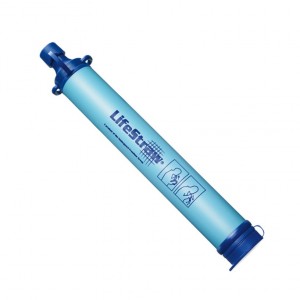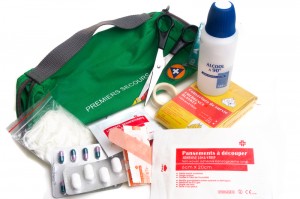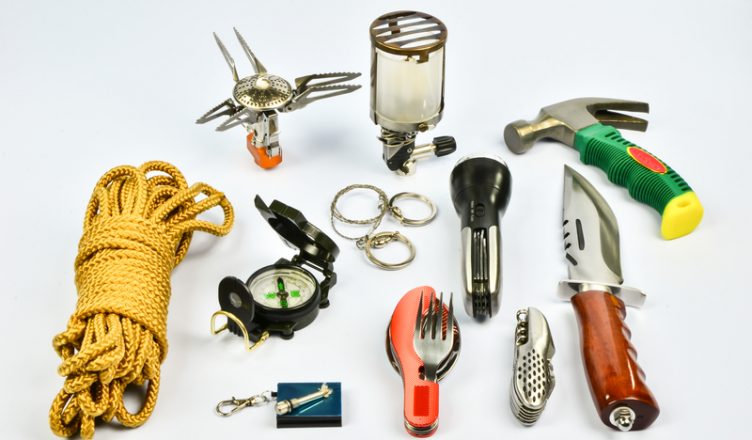For many preppers, gear is the name of the game when it comes to disaster survival. While we here at Survivopedia like to advocate skill building over the collection of supplies, there are certain tools and equipment that can be live saving when SHTF.
You’re probably already familiar with the term bug out bag and you may already have one (or more) of your own. Everyone has his or her own idea of what a bug out bag should look like, but there is no such thing as the perfect set up.
But a bug out bag isn’t just only intended for those individuals intent on getting out of dodge as soon as disaster strikes. Furthermore, bugging out may not always be a viable option. The survival essentials that you’d want to have in a wilderness or on-the-road survival situation are the same items you’d want on hand at home when SHTF.
With that in mind, we’ll introduce you to some essential tools to keep in your home to give you a much better chance at surviving a disaster.
Since we’re assuming you’ll be using your home as a shelter, we won’t discuss tools associated with shelter building. We will focus on the other crucial components for survival including:
- Water procurement
- Fire-making
- Cooking
- First Aid
- Communication
- Security
Water procurement
Water is the single most important element you need to survive. It’s a great idea to store large quantities of water in your home in case of emergencies, but keep in mind even bottled water has a shelf life and requires rotation. When the pipes run dry and your stores run out, you’ll need a way to procure water on your own. In a survival situation you should aim to drink at least 1-liter of water each day.
Keep in mind that you’ll not only need water for drinking, but for cooking, cleaning, and hygienic purposes as well.
Boiling rainwater and making a homemade still are options, but when it comes to water-procuring tools a purifying straw can be a great device to own. The LifeStraw is an award-winning portable filtration device that allows you to drink directly from any fresh water source, contaminated or not.

Its basically a big, plastic tube that allows you to suck water through a series of hollow fibers in a process called microfiltration–this frees the water you drink from 99.9% of bacteria and parasites.
A single personal LifeStraw can filter up to 1,000 liters of water and has a 3-year shelf life.
Fire-making
Fire is essential for keeping warm, disinfecting water, cooking, and overall morale. If you already have a wood-burning fireplace in your home you’re off to a good start, as those powered by gas and electricity will be quick to fail when SHTF.
Whether hunkering down or bugging out, it’s recommended you always carry at least 3 tools for starting a fire. This could be your basic plastic lighter, a box of waterproof matches, a magnesium rod and striker, or emergency flares. Regardless of you’re preferred choice, always have a backup to your backup.
In addition to actually starting a fire, you’ll need tools capable of providing you with a sustainable supply of fuel, most often in the form of wood. The best tools for gathering wood are wood-splitting mauls (somewhere in the 6 to 8 pound range), crosscut saws, and sledgehammers and wedges.
Cooking
Many home preppers are advocates of stockpiling as much shelf-stable, dehydrated, and non-perishable food items as your space and budget can afford. Whether or not this is your route, you’ll still need a handful of basic tools and utensils to make meal preparation and cooking much easier.
- Basic utensil set (fork, knife, spoon) or spork
- Can opener
- Plate set
- Enamelware camp mug
- Single burner stove (with extra fuel canisters)
- Homemade alcohol stove
- Metal pot
First Aid
Hopefully you already have a sense of what should go into a basic survival first aid kit. Things like gauze, hydrogen peroxide, antibacterial ointment, bandages, and scissors are all basics that you should have on hand.

Some other essential first aid tools and instruments to consider include:
- Tweezers
- Safety pins
- Suture kit
- Razor blades
- Tampons
- Surgical tubing
Communication
In an earlier post, we went into some detail about the importance of familiarizing yourself with various communications systems and devices. When disaster strikes, power lines and cell towers are sure to be affected and leave you without information pertaining to your surroundings.
In a disaster situation, knowledge is the key to your survival. That begs the importance of having a backup radio (or two or three) on hand to make receiving and transmitting pertinent information to others a possibility. Beyond the radio itself you probably won’t need many tools to keep it operating aside from a power source and antenna.
See the post on communications or its follow up on some less-conventional techniques for more information on this topic.
Security
In a hunker-down, home survival scenario, you must think about what measures you are willing to take to protect your family and property.
No bug out bag or home of a self-respecting prepper should be without some form of weapon to be used for self-defense and security purposes. Firearms should be your first option if available to you, as they are the most effective and powerful of self-defense weapons. Not to mention they have the ability to put food on the table if used for hunting.
Other self-defense tools/items include:
- Pepper spray
- Gun cleaning kit
- Gun oil/lubrication
If a gun isn’t available to you, you may consider using one of the multi-purpose tools listed in the next category, as some of them can be adapted to be used for security in addition to their intended practicality.
Misc. Tools
The equipment listed below may not fall specifically into the categories above but are commonly found in bug out bags and home preparedness kits alike because of their versatility.
- Crowbar
- Fixed-blade knife
- Paracord
- Siphon/hand pump
- Hatchet
- Heavy-duty flashlight (Maglite works best)
- Multi-tool/Swiss Army knife
- Duct tape
- Garden wire
Keep in mind that every prepper is different and has his/her own ideas of what tools, equipment, and supplies you should have on hand when SHTF. Arguably, you’ll have a much better chance surviving a disaster scenario if you stay in your home and use the resources you already have to foster the survival of your family.
The categories mentioned above and their associated tools are commonly considered the most important components and essential equipment for surviving any adverse scenario.
Check out our other posts for more in-depth discussion of these categories and to help get a better sense of what tools you should have on hand.
This article has been written by Cody Griffin for Survivopedia.





